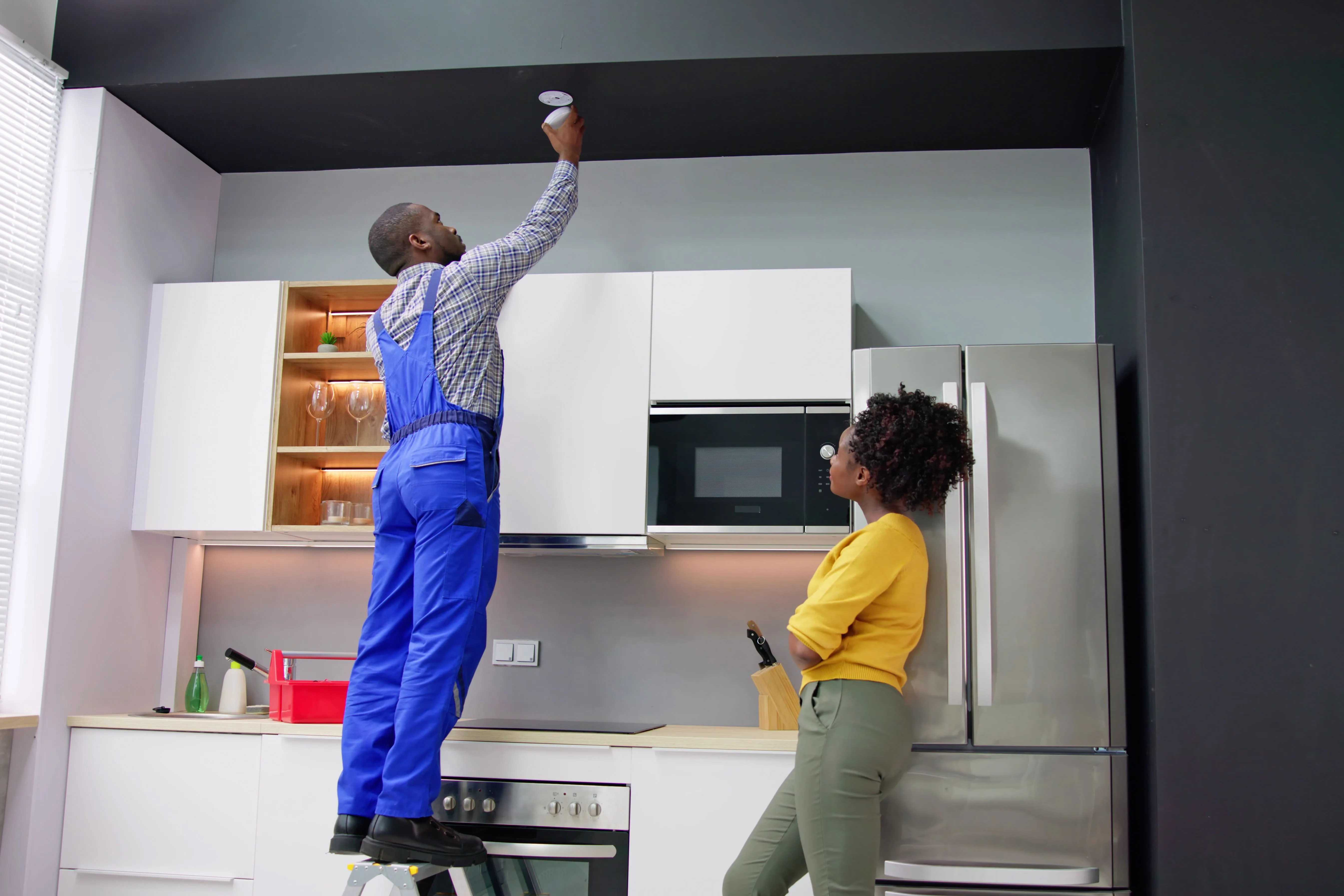Carbon monoxide is an odorless, colorless gas that can bind to your body’s hemoglobin, causing oxygen deprivation. Carbon monoxide detectors can be lifesavers in the event of a leak by triggering an alarm when the CO levels in a closed space rise above acceptable parameters. But how can you determine what is the best CO detector for you?
CO alarms come with a wide range of features. Some have digital displays; others double as smoke detectors, called combo units. Most alarms have battery backups in addition to a main power source, and a few have voice alerts that tell you the levels of carbon monoxide found in their environment.
Read on to see our top picks for the best carbon monoxide detectors to determine the best option for your home security needs. For more ways to improve homeowner’s security, visit our list for the best home security systems.
Best carbon monoxide detectors reviews
Pros
- Loud 85-decibel alarm
- Among the most affordable on the market
Cons
- No smart home integration
- No hardwired option
First Alert’s CO400 is a no-frills alarm that utilizes an electromechanical carbon monoxide sensor to detect CO in the air. The 9-volt battery-powered device sports a very loud alarm and a test/silence button. Moreover, its straightforward design makes it easy to learn how to use and maintain.
If you’re looking for an affordable, simple alarm, you can find a First Alert CO400 for under 20 dollars.
Pros
- Can interconnect with other hardwired detectors
- Simple, sleek design
Cons
- Needs available wiring to connect to home
- No smoke detector
Hardwired CO detectors connect directly into your home’s electrical system. This frees up space in your home’s outlets and removes any low battery problems your detector might face.
The First Alert’s CO520 not only boasts a simple, easy to understand design, but also comes with a 9V battery backup in case of power outages. Unfortunately, this straightforward design also makes it so the device does not double as a smoke alarm.
Pros
- Plug-and-play makes it easy to install
- Digital display shows CO level
Cons
- No smoke detector option
- Must have accessible outlet
The Kidde Nighthawk is a simple plug-and-play carbon monoxide detector with a digital display that shows the current CO level. It has a 9V battery backup in case of power outages and a six-feet cord extender.
The device’s simple design allows its installation process to be relatively straightforward compared to hardwired units. While it does not detect smoke, Kidde Nighthawk works well for homeowners looking for a CO detector that’s fairly simple to use and maintain while having additional helpful features via its display.
Pros
- Monitors air quality in addition to CO
- Provides push notifications and voice alerts
Cons
- Some features are behind a subscription paywall
- Requires a Wi-Fi connection
In addition to providing CO detection, the Smart CO Detector/IAQM allows you to monitor your home’s air quality in general. This can prevent respiratory illnesses and other medical issues that may surface due to high humidity levels (which can lead to mold), Total Volatile Organic Compounds and unexpected high or low temperatures.
Kidde’s Wi-Fi connectivity allows the device to send air quality and CO readings through push notifications and voice alerts. The app also allows you to review real-time CO and air quality ratings. Although most features are readily available, some of the advanced features and reports require a subscription to its proprietary app.
Pros
- Provides phone notifications when you’re not home
- Tells you exactly where the CO leak is coming from
- 10-year battery life
Cons
- More expensive than other options
- No replaceable battery option
Google Nest Protect’s combo smoke and carbon monoxide detector provides a variety of features that integrate with your smart home setups, including phone alerts in case you’re away from home and sensing both fast burning and smoldering smoke.
Its location-specific voice alarm tells you exactly where a CO leak is detected, which can help evacuate affected areas faster and more efficiently. Additionally, Nest Protect uses a lithium battery that lasts ten years — much longer than the battery life of most competitors.
Best carbon monoxide detectors FAQs
How do you use a carbon monoxide detector?
CO sensors work automatically. They are installed in enclosed spaces and ring an alarm if the air quality falls below acceptable levels. After a CO alarm has been activated, you should evacuate the premises immediately and get fresh air. If you are showing symptoms of carbon monoxide poisoning, professional medical help may also be required.
What are the symptoms of CO poisoning?
Carbon monoxide poisoning can cause dizziness, nausea and shortness of breath. These symptoms are often confused with other illnesses, which is why it is important to identify a carbon monoxide leak quickly.
What are the acceptable levels of carbon monoxide in the air?
According to the World Health Organization, the indoor air level concentrations for CO should be below an average of nine parts per million (ppm) for any eight-hour period and below 25 ppm for any one-hour period.
How long do carbon monoxide detectors last?
Carbon monoxide alarms usually have a life span of five to ten years. You should replace the battery-operated CO detectors on a yearly basis.
Summary of Best Carbon Monoxide Detectors
Carbon monoxide detectors are essential safety devices that detect dangerous levels of CO, an odorless, colorless gas, in enclosed spaces. These detectors come in various forms, such as basic alarms, combo smoke detectors and smart devices with features like digital displays and Wi-Fi connectivity.
When choosing a CO detector, consider factors like ease of installation, power source, and additional features such as air quality monitoring or smart home integration to find the best fit for your home security needs.
